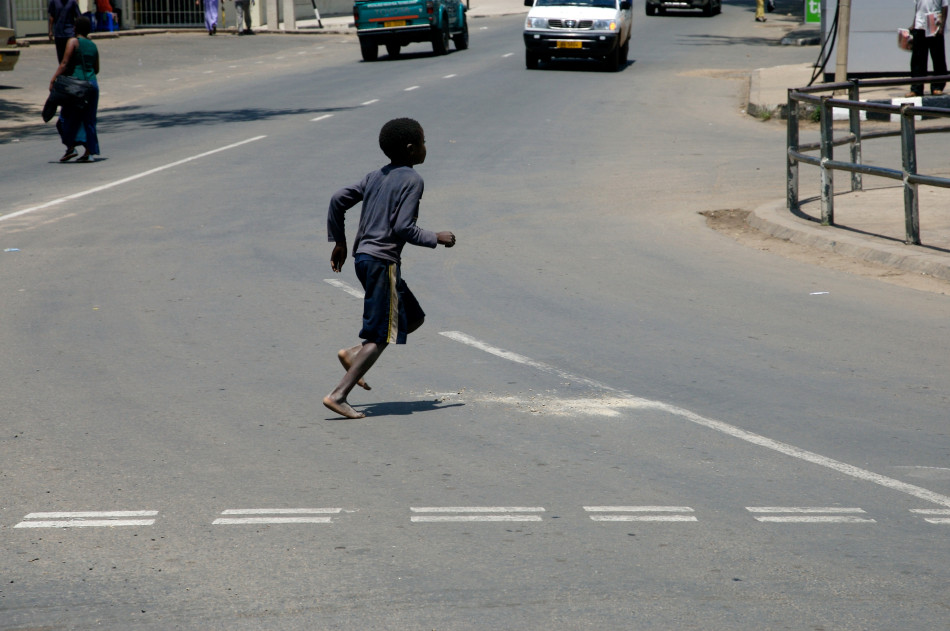New global road safety report shows that road fatality rates remain constant despite increasing motorization

In the last three years, 79 countries have seen a decrease in the absolute number of fatalities while 68 countries have seen an increase. However, the number of road traffic deaths is stabilizing even though the number of motor vehicles worldwide has increased rapidly, as has the global population.
Countries that have had the most success in reducing the number of road traffic deaths have achieved this by improving legislation and enforcement, and making roads and vehicles safer.
The WHO report highlights that road users around the world are unequally protected. The risk of dying in a road traffic crash still depends, in great part, on where people live and how they move around. A big gap still separates high-income countries from low- and middle- income ones where 90% of road traffic deaths occur in spite of having just 54% of the world's vehicles. Europe, in particular the region's wealthier countries, has the lowest death rates per capita; Africa the highest.
But more countries are taking action to make roads safer. In the last three years, 17 countries have aligned at least one of their laws with best practice on seat-belts, drink-driving, speed, motorcycle helmets or child restraints.
The report reveals that globally:
• 105 countries have good seat-belt laws that apply to all occupants;
• 47 countries have good speed laws defining a national urban maximum speed limit of 50 Km/h and empowering local authorities to further reduce speed limits;
• 34 countries have a good drink-driving law with a blood alcohol concentration (BAC) limit of less than or equal to 0.05 g/dl as well as lower limits of less than or equal to 0.02 g/dl for young and novice drivers;
• 44 countries have helmet laws that apply to all drivers, passengers, roads and engine types; require the helmet to be fastened and refer to a particular helmet standard;
• 53 countries have a child restraint law for occupants of vehicles based on age, height or weight, and apply an age or height restriction on children sitting in the front seat.
Motorcyclists are particularly vulnerable, making up 23% of all road traffic deaths. In many regions this problem is increasing; in the region of the Americas, for example, the proportion of motorcycle deaths out of all road traffic fatalities rose from 15% to 20% between 2010 and 2013. In the South-East Asia and Western Pacific regions a third of all road traffic deaths are among motorcyclists.
The report also found that some vehicles sold in 80% of all countries worldwide fail to meet basic safety standards, particularly in low- and middle-income countries where nearly 50% of the 67 million new passenger cars were produced in 2014.
The Global status report on road safety 2015 comprises a narrative text combining evidence, facts and best practices with conclusions drawn following the analysis of the data collected for 180 countries. In addition it offers one-page profiles for each participating country and statistical annexes. An interactive online data visualization of the report is also available.
The report is the third in its series and is the official monitoring tool of the Decade of Action for Road Safety 2011-2020. The publication of the report follows the adoption of the 2030 Agenda for Sustainable Development which includes an ambitious road safety target and precedes the 2nd Global High-Level Conference on Road Safety that will be held in Brasilia, Brazil, 18-19 November 2015.
Jean Todt, FIA President and UN Secretary General’s Special Envoy for Road Safety, said: "the 2015 WHO Global Report on Road Safety will prove to be an important asset in the fight against road crashes at the international level. The results show once again that we need to intensify our efforts - every single loss and injury is intolerable. Data collection is also a crucial challenge for all road safety stakeholders, including UN agencies, in their advocacy activities and the work done by WHO to compile this report must be acknowledged."
You can read and download the full report at: http://www.who.int/violence_injury_prevention/road_safety_status/2015/en/

 Facebook
Facebook Twitter
Twitter






